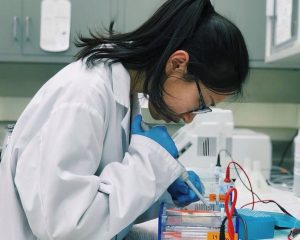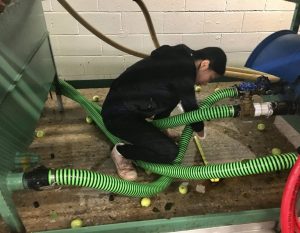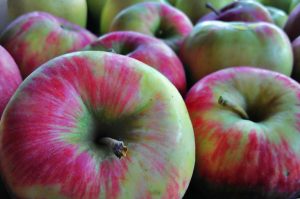The apparent international rise in foodborne virus outbreaks attributed to fresh produce and the increasing importance of fresh produce in the Australian diet has led to the requirement to gather information to inform the development of risk management strategies.
 A prevalence survey for norovirus (NoV) and hepatitis A virus (HAV) in fresh Australian produce (leafy greens, strawberries and blueberries) at retail was undertaken during 2013–2014 and data used to develop a risk profile. The prevalence of HAV in berries and leafy greens was estimated to be <2%, with no virus detected in produce during the yearlong survey. The prevalence of NoV in fresh strawberries and blueberries was also estimated to be <2% with no virus detected in berries, whilst for leafy greens the NoV prevalence was 2.2%.
A prevalence survey for norovirus (NoV) and hepatitis A virus (HAV) in fresh Australian produce (leafy greens, strawberries and blueberries) at retail was undertaken during 2013–2014 and data used to develop a risk profile. The prevalence of HAV in berries and leafy greens was estimated to be <2%, with no virus detected in produce during the yearlong survey. The prevalence of NoV in fresh strawberries and blueberries was also estimated to be <2% with no virus detected in berries, whilst for leafy greens the NoV prevalence was 2.2%.
 Prevalence of a bacterial hygiene indicator, Escherichia coli, was also investigated and found to range from <1% in berries to 10.7% in leafy greens. None of the NoV positive leafy green samples tested positive for E. coli, indicating it is a poor indicator for viral risk.
Prevalence of a bacterial hygiene indicator, Escherichia coli, was also investigated and found to range from <1% in berries to 10.7% in leafy greens. None of the NoV positive leafy green samples tested positive for E. coli, indicating it is a poor indicator for viral risk.
The risk was evaluated using standard codex procedures and the Risk Ranger tool. Taking all data into account, including the hazard dose and severity, probability of exposure, probability of infective dose and available epidemiological data, the risk of HAV and NoV foodborne illness associated with fresh Australian berries (strawberries and blueberries) sold as packaged product was deemed to be low. The risk of foodborne illness from HAV associated with leafy greens was also deemed to be low, but higher than that for fresh berries, due mainly to the potential for recontamination post-processing if sold loose. The risk of foodborne illness from NoV associated with leafy greens was deemed to be low/moderate. Despite the prevalence of NoV in leafy greens being low and the inability to discriminate between infective and non-infective virus using PCR based methodologies, the fact that NoV was detected resulted in a higher risk associated with this pathogen-product pairing; compounded by the higher prevalence of NoV within the community compared to HAV, and the potential for leafy greens to become contaminated following processing if sold loose.
Estimating risk associated with human norovirus and hepatitis A virus in fresh Australian leafy greens and berries at retail 26 August 2019
International Journal of Food Microbiology
Valeria A.Torok, Kate R.Hodgson, Jessica Jolley, Alison Turnbull, Catherine McLeod
https://doi.org/10.1016/j.ijfoodmicro.2019.108327
https://www.sciencedirect.com/science/article/pii/S0168160518306974












